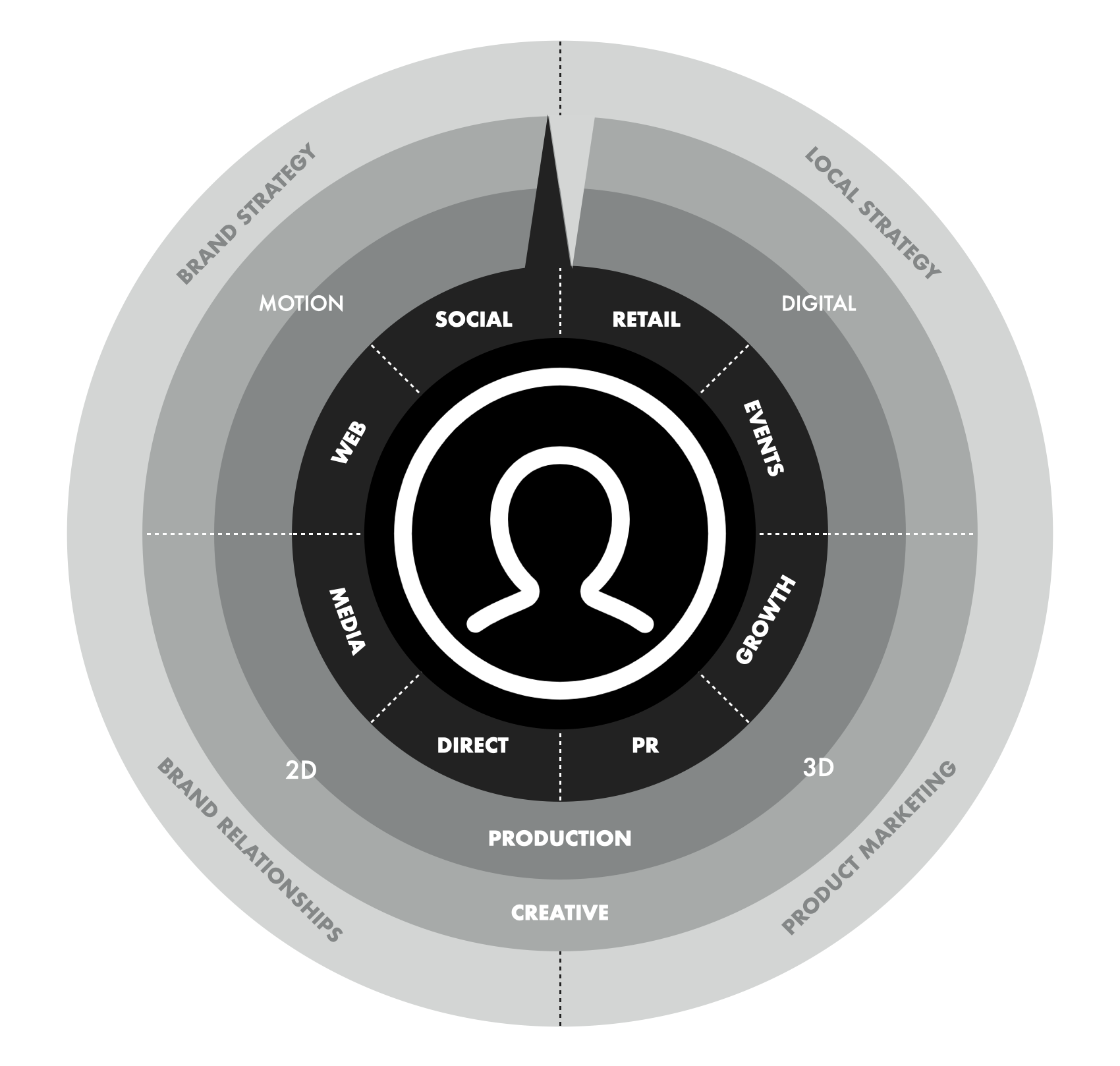A Customer Centric Org
With the number of businesses laying off staff increasing, marketing is often high on the list for areas to cut. It’s an incredibly difficult time. On top of the distress and financial uncertainty for the individuals affected, culture which has taken years to establish can be badly damaged, and the staff who remain do so in fear of further cuts.
The dark reality is, it is also an opportunity. The forced disruption should make businesses look at product offering, marketing approach and the team structure supporting them. It’s a time for reflection, then getting fit for what is next.
In this post I want to describe how I map a marketing organization around the customer. The goal of the exercise is to identify what functions are needed, define what each is accountable for and what can/should be outsourced.
For this example I’ve used a B2C marketing org as that is where I have the most experience, but the model works for any marketing org. The exercise does not identify reporting lines or number of headcount needed, in my view, this is a vital precursor to that work.
1. Experience layer
The experience layer encompasses how the customer interacts with the brand (outside of product) and includes all marketing channels.
Frequently these channels will be used to distribute marketing collateral which has been briefed elsewhere in the marketing organization, however channel owners must constantly experiment to develop a deep understanding for what is effective. Flexibility is needed to enable this test and learn approach. I’ve found a solid set of brand systems (guidelines, visual toolkits, brand utilities etc.) enables that flexibility, while maintaining brand consistency.
In this example I have included the following channels -
Media - digital or traditional buys.
Web - owned & partner web experiences.
Social - across all platforms both owned & partner.
Retail - physical spaces both owned & partner.
Events - live events, activations & seeding opportunities.
Growth - funnel efficiency.
PR - earned press.
Direct - CRM via email, SMS, notifications etc.
2. Creative layer
Marketing collateral is required to fill those channels, which is the role of the creative layer. This is split into both creative & production as ideas need to be both generated and delivered. Those two parts of the creative layer can also function independently when required. For example, when executing from an established visual toolkit, the production function can manage the request as further creative development is not required.
In this example I have included the following creative functions -
2D - static design assets.
3D - designing packaging, fixtures or spaces.
Motion - creating all things moving image.
Digital - specializing in UX / UI / digital and social media.
What is clearly missing as a function in its own right is concept development. I believe that big ideas can come from each of these teams and I would recommend going broad across teams (internal & external) when trying to crack a big idea, then revert to expertise when that has been locked. Some, none or all of these functions could be outsourced, I would always recommend a hybrid approach where possible.
3. Strategic layer
Within this layer I would include any function that defines channel agnostic strategy on how to connect with the customer. For this example I’ve included Brand Strategy (global brand management), Local Strategy (how you connect brand and local customer), Brand Relationships (developing relationships which offer high value connection to the customer) & Product Marketing (product positioning, messaging and differentiation).
4. Marketing operations
Marketing organizations are complex ecosystems, and the Marketing Operations team will play a vital role in holding each of the layers together and working efficiently. In my opinion the best way to drive efficiency is to centralize at least the following functions within Marketing Operations.
Process - Define and own the overall marketing process the teams work to.
Program Management - A team to manage marketing programs between multiple layers of the organization.
Tools - Central systems for asset management / project tracking / documentation / collaboration etc.
Analytics - Connect the tracking from various channels and report on effectiveness of activity so the group can learn together.
5. Using the function map
Now the function map has been established, the following exercises help to define the future marketing organization
Identify gaps - list what assets are needed to fill each channel of the experience layer, define where the brief for that work comes from and who is going to execute it. This exercise will identify any gaps you have in the function map that need to be filled.
Mission statements - setting up each function with a mission statement gives them purpose. They should each feel complimentary rather than competing.
Outsource / Insource - look at the functions identified and weigh the benefits of having it established as part of the business vs working with a vendor.
Establish the complications - this is a brutal simplification which forces the customer into the center of an organization. There are bound to be complications, for example - multiple brands, multiple lines of business, regional teams etc. With these identified, you can repeat the process for each complication to identify what can be shared across complications and what needs to be separate.
Design process - having a clear understanding of who can brief work, how the work is developed and how it is approved will help to reduce team frustration. Process should never restrict creativity or innovation, but it should limit wasted effort.
Taking a 30,000 foot view like this often helps in making big strategic decisions about an organization. If you’d like support, we can help. Just book at virtual coffee to discuss your requirements.





